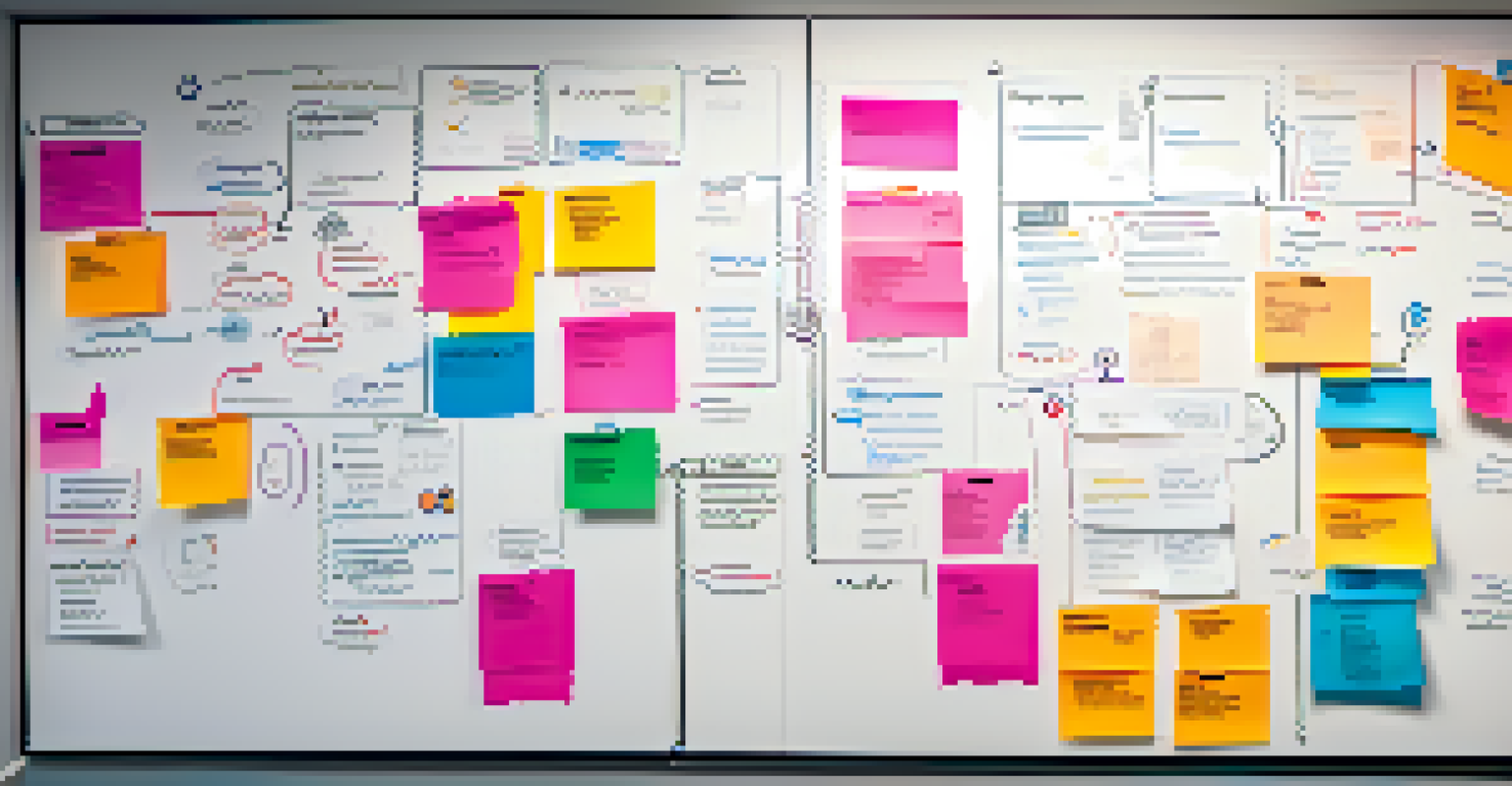Common Mistakes to Avoid When Using the Business Model Canvas

Neglecting Market Research Before Starting the Canvas
One of the biggest mistakes entrepreneurs make is skipping comprehensive market research before diving into the Business Model Canvas. Without understanding your target audience, it's challenging to develop value propositions that truly resonate. Think of it like building a house without knowing the land; your foundation may not be sturdy enough to support your vision.
Without data, you're just another person with an opinion.
Market research helps identify customer needs, preferences, and pain points. This information is crucial in shaping your value propositions and customer segments. By investing time in this step, you ensure that the rest of your Business Model Canvas is built on solid ground.
Ultimately, a well-researched approach allows you to create a business model that is not just theoretical but practical and relevant. Ignoring this step can lead to misaligned offerings that don’t meet market demand, resulting in wasted resources and missed opportunities.
Overcomplicating the Canvas with Too Much Detail
While it might be tempting to provide extensive detail in every section of the Business Model Canvas, overcomplication can lead to confusion. The goal of the canvas is to provide a clear, concise overview of your business model. Think of it as a map; too many details can obscure your destination.

Aim for clarity by focusing on the most critical elements of your business. Each section should communicate essential information without overwhelming stakeholders. This clarity allows for easier adjustments and discussions, promoting a smoother path to innovation.
Importance of Market Research
Thorough market research is essential to understanding customer needs and building a solid foundation for your Business Model Canvas.
In short, simplicity is your friend. By streamlining the information presented, you create a more effective tool that fosters understanding and collaboration among team members and investors alike.
Failing to Update the Canvas Regularly
A common oversight is treating the Business Model Canvas as a static document rather than a dynamic one. Your business environment can change rapidly, and so should your canvas. Ignoring this can lead to outdated strategies that no longer align with market realities.
The greatest danger in times of turbulence is not the turbulence; it is to act with yesterday's logic.
Regularly revisiting and updating your canvas allows you to adapt to new opportunities and challenges. For example, after launching a product, you might find that customer feedback prompts a pivot in your value proposition. Keeping the canvas fresh ensures your business remains relevant and competitive.
Think of your canvas like a living organism; it needs to evolve to thrive. By committing to regular updates, you position your business for ongoing success in an ever-changing landscape.
Ignoring the Importance of Customer Relationships
Another common mistake is underestimating the significance of customer relationships in the Business Model Canvas. Many entrepreneurs focus solely on product development, assuming that a great product will sell itself. However, without strong customer connections, even the best ideas can falter.
Building meaningful relationships with customers fosters loyalty and repeat business. It’s essential to outline how you plan to engage with your customers and maintain those relationships over time. Consider incorporating feedback loops and customer support strategies to enhance this aspect.
Keep the Canvas Simple
A clear and concise Business Model Canvas facilitates understanding and collaboration, preventing confusion from excessive detail.
In essence, understanding that your customers are more than just transactions is crucial. By prioritizing customer relationships, you create a sustainable business model that thrives on trust and engagement.
Neglecting Key Partners and Their Roles
When filling out the Business Model Canvas, it’s easy to overlook the role of key partners. Many entrepreneurs focus so much on their own operations that they forget to consider how partnerships can enhance their business model. However, strong partnerships can provide valuable resources and expertise.
Identifying and nurturing relationships with key partners can lead to improved efficiency and innovation. For instance, a tech startup might collaborate with a marketing agency to enhance its reach and visibility. This symbiotic relationship can elevate both businesses.
Ultimately, recognizing the value of your partners not only strengthens your business model but also opens doors to new opportunities. Don’t underestimate the power of collaboration in achieving your business goals.
Forgetting to Validate Assumptions with Real Data
One of the gravest errors is assuming that all elements of the Business Model Canvas are correct without validation. It’s crucial to test your assumptions through real data and feedback rather than relying solely on intuition. This step is similar to conducting a science experiment; hypotheses need evidence to be taken seriously.
For example, if you believe a particular value proposition will resonate with customers, consider running a small pilot test. Collecting real-world data helps you refine your model based on actual customer behavior rather than guesswork.
Engage Your Team
Involving your entire team in the canvas development process fosters collaboration and leads to a more comprehensive business model.
By validating your assumptions, you not only build confidence in your business model but also enhance its effectiveness. This approach leads to informed decisions that can significantly impact your success.
Not Engaging the Entire Team in the Process
A frequent mistake is not involving the entire team in the development of the Business Model Canvas. When only a few voices are heard, the final product may lack diverse perspectives and insights. Engaging your team fosters a sense of ownership and collaboration that can lead to a more robust business model.
Encouraging team members to contribute their ideas and feedback can unveil valuable insights. For instance, different departments might have unique views on customer needs and operational efficiencies. This collaborative effort ensures that the canvas reflects a holistic view of the business.

Involving your team not only strengthens the canvas but also cultivates a culture of collaboration. It empowers everyone to align with the business vision and work towards common goals, ultimately enhancing performance.
Failing to Communicate the Canvas Effectively to Stakeholders
Lastly, a common mistake is not clearly communicating the Business Model Canvas to stakeholders. Even the most ingenious model can fall flat if it’s not presented well. Think of it as telling a story; if your audience doesn’t understand the plot, they won’t be engaged.
When sharing your canvas, focus on the key elements that matter most to your audience. Tailoring your presentation to different stakeholders—like investors, team members, or partners—ensures that everyone grasps the value of your business model.
Effective communication fosters buy-in and support, which are crucial for execution. By honing your storytelling skills around the canvas, you create a compelling narrative that resonates with your audience and garners the necessary support for your vision.